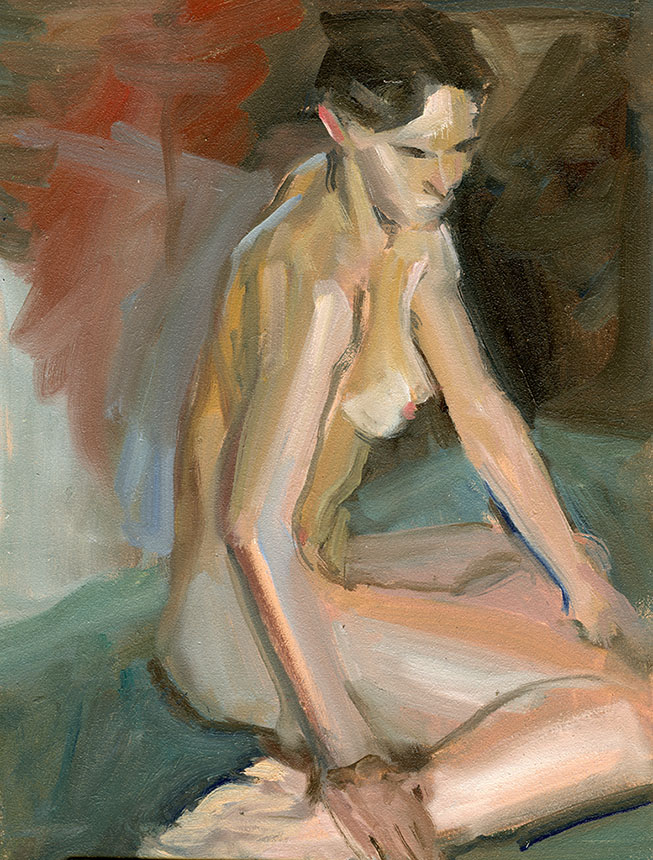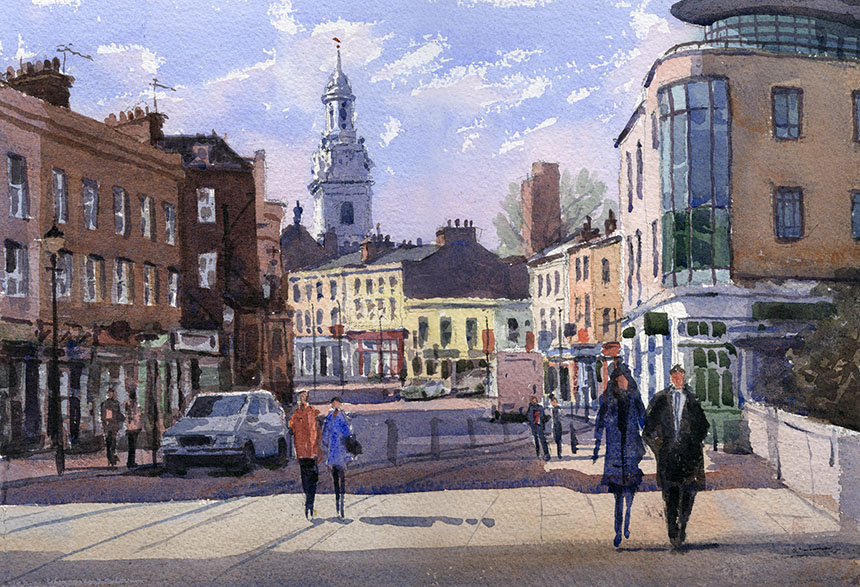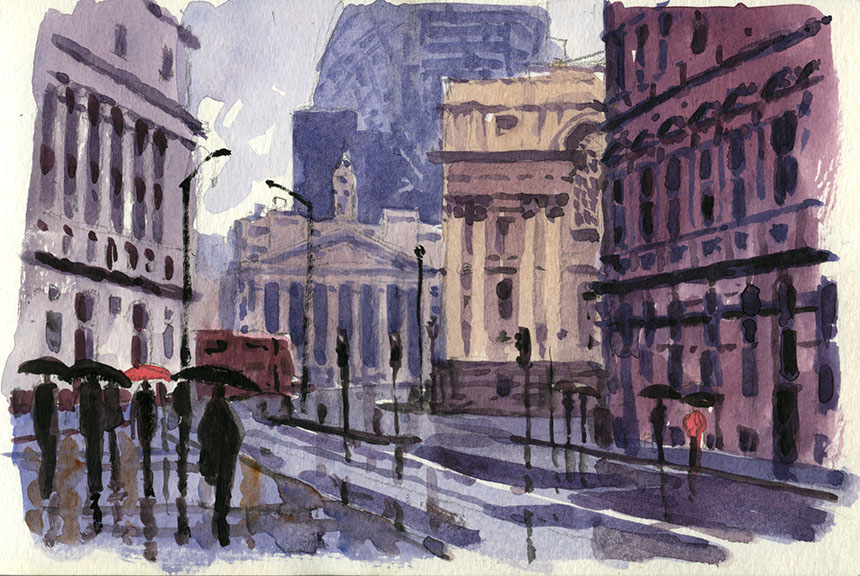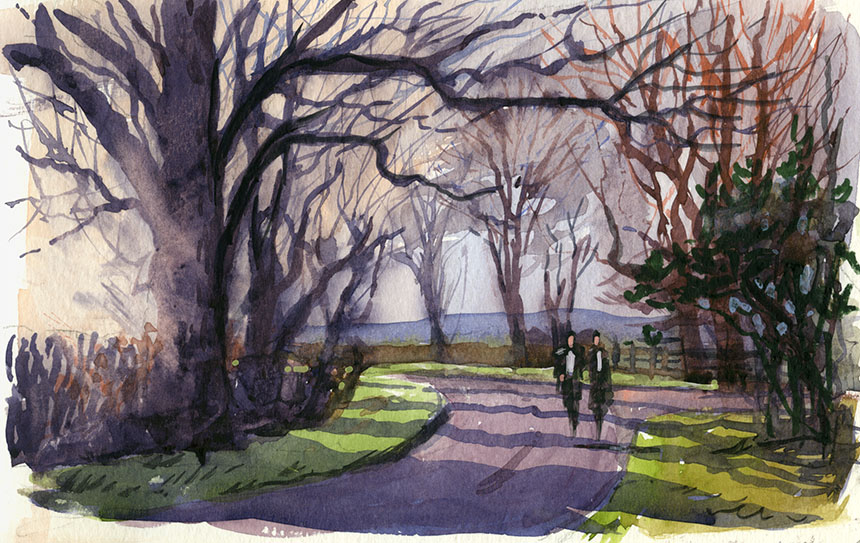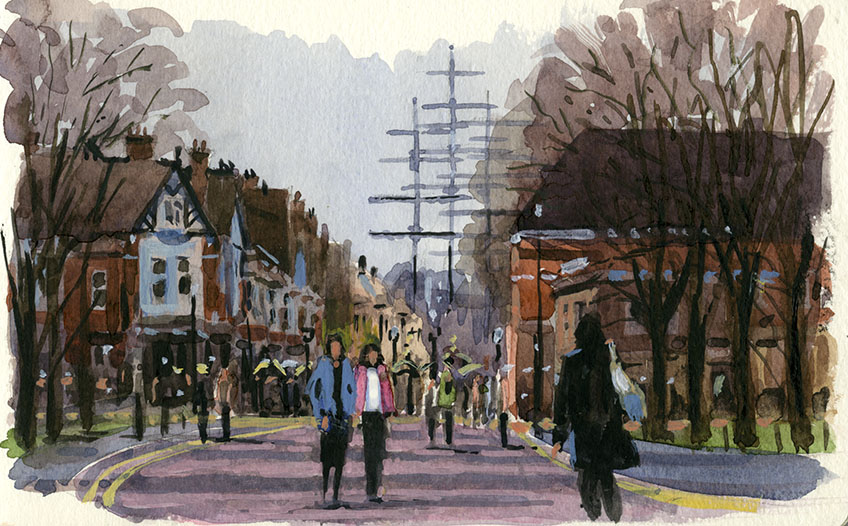I have rather been neglecting studio watercolours of late in favour of the oils. That may change as I am busy with commercial jobs it is easier to squeeze in a quick watercolour than an oil painting. I feel I am at a bit of a crossroads with the watercolours and have been trawling through other artists work to try and get inspiration. This can be an exercise that brings a mix of pleasure and pain. I have never understood artists that paint essentially the same picture again and again, however good that picture is. Indeed it is hardly surprising that they are pretty damn good as they have painted the thing 100 times! Nonetheless there is a lesson for me there, to paint the same picture 4 or 5 times is a good exercise as it can become a little more distilled at each attempt. The same thing I have found with painting the same subject, I have always had a tendency to put locations into a “done that” folder and move on.
I have been looking at cityscapes in particular, there seems to be a style used by many where the street level is shrouded in an inchoate gloom with small highlights and canopies cut of it to indicate life and movement. All very well and I freely admit I often think such paintings are lovely it looks very atmospheric but can be if used too often perhaps a little lazy. The lesson for me here is that it is no good looking for subjects that fit my technique, this will only result in potboilers, find a subject that stirs you and then paint it to bring out whatever it is that took your eye in the first place seems a better route. In my researches I came across a painter who paints amazingly adept if slightly over finished watercolours… but they are all of busty ladies in white dresses lurking about on the sea shore. He has a great eye for light his drawing is spot on, the compositions very well organised… but irredeemably crass in content and imagination. Which show that however well painted, a picture of sweet kittens with bows around their necks will almost never rise above the subject matter. Another lesson in there somewhere! I thought about adding a link but best not, the curious can PM me.
Other painters through history have found a good trick and stuck to it. Russell Flint springs to mind with his oddly coloured spanish ladies in various states of undress. Boucher, Fragonard and Watteau all wonderful draughtsmen but the paintings are in large part insubstantial froth. The orientalists could be consigned wholesale to the potboiler draw and the history painters too. Poussin I never warmed to and find his classical fancies lacking in spirit… Tiepolo however does wonders with more or less the same subject matter. I went through a pretty severe Preraph longtressed maiden period myself, so I know how it happens. If my demure ladies had been well enough done and met with any success maybe I would still be churning them out!
There was a quite interesting program with Graham Dixon about the Dutch and Flemish painters. He is relentlessly on message in art historical terms with the history of painting seen as a neat progression of breakthroughs leading to the holy grail of abstraction. One interesting thing he passed over very briefly was the way the Dutch art market was organised. Artists were organised into guilds and paintings were organised into a hierarchy. Of first importance was history painting, followed by portraits, scenes of everyday life or genre, then landscape with still life at the bottom of pile. There was a apparently thriving market with people collecting works avidly, not just the rich but up and down the social scale. There is not a lot written about it but there seems to have been an economic bubble with prices rising and then crashing due to the sheer number of works painted. I read that at the end a completed canvas was worth less than a blank fresh one. Rembrandt and Vermeer owed their later poverty to this calamity it seems.
Our situation now is quite different with far too many pictures being painted compared with those that might wish to own one. The relatively small top of the heap is supported by a truly immense pyramid of the unsuccessful and eager hopefuls below them. What is an artist to do in such an age? I could I suppose set about a relentless campaign of self promotion. I do do a fair bit of this using online avenues etc, but more out of curiosity as to the changing scene rather than any ambition. My main ambitions these days are focussed on getting as good as I can by my own lights before I pop my clogs!
Which brings me back to watercolour, I must I think have a period of experimentation to broaden some areas of my technique. It is always somewhat traumatic doing this as there are inevitably quite a few fatalities. The areas I want to focus on are controlling the tightness and looseness across the painting. There is the interesting method of soaking your paper and then laying it on a sheet of perspex, flattening it on with a roller as it expands. Once the paper has done all the stretching it is going too and any excess water is mopped up you have to finish your painting as it goes through the drying process. Re-wetting can be done at need with a spritzer or wide brush. The paper should grip the plastic and the painting dry flat… which I haven’t tested yet but seems plausible.
On with some paintings.
.
A painting I have been meaning to do for a while. Most Saturday mornings I go down to Deptford market to do my weeks shopping. The market is a
vibrant place with every culture in the world represented, but everybody seems to rub along together amicably. At this time of year in the morning the
sun shines right down the street which on a slightly hazy morning looks wonderful. I have hundreds of photos and a fair few sketches but last week
I got the last bit of the puzzle a leading character. A small man immaculately dressed looking out of place but still at home! 14in by 14in.
.
I saw this gentleman in Green Park last autumn. I drew him out on the board but never got round to painting him!
I must do more individual figures. I love figures in a landscape but don’t do enough where the person is the subject.
London’s people are after all the heart and soul of the place, not the buildings and parks. Oil, 10in by 7in.
.
An all day painting session held by fellow painter Arnie Dobbs was a chance to get out the oils to paint the figure. I had not done any oil painting from
life before only acrylics. The oils were so much better! Also faster so I only took about 40 min on each of these. 10in by 8in.
.
Slightly easier on the second as the initial colour mixing was already there on the palette. All done with a 1/2in filbert. 14in by 10in oils.
.
The introduction of a green really improved the skin tones. 16in by 10in.
.
Last painting of the session. There were some charcoals but I intend a life drawing post next dealing with my struggles
with the ‘orrible stuff! 10in by 8in.
.
My first days painting as an official candidate for the Wapping Group of Artists. Handily the venue was Greenwich so I got there early to catch the light.
By the time I had finished this I was surrounded by hoards of tourists! 1/4 sheet Arches.
.

Here is one of the less obscured moments. Odd but people will stand in a bunch right in front of you! You can see my set up, watercolours
are so light weight. Even with the tripod everything is very easy to carry. I must make myself a bottom tray that matches the size of the
board a little more space would be good.
.
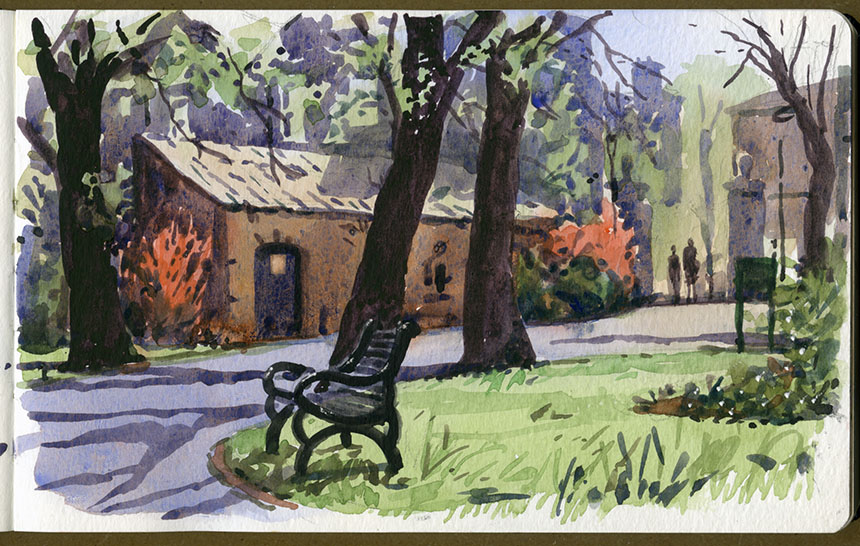
Next I did a small sketch in the old graveyard behind the church. It is hidden away so the tourists can’t find it! In my Moleskin 7in by 5in. The Moleskins
have odd paper in them I hated it at first, but am coming to rather like it.
.
This is the old power station in East Greenwich, the light was rather dramatic and I was taken by the shape against the sky. I painted the whole thing with
a 1/2 in flat sable which rather suited the subject. By using the edge you can tap in lines very crisply but with a pleasing variation. 1/4 sheet Arches rough.
.
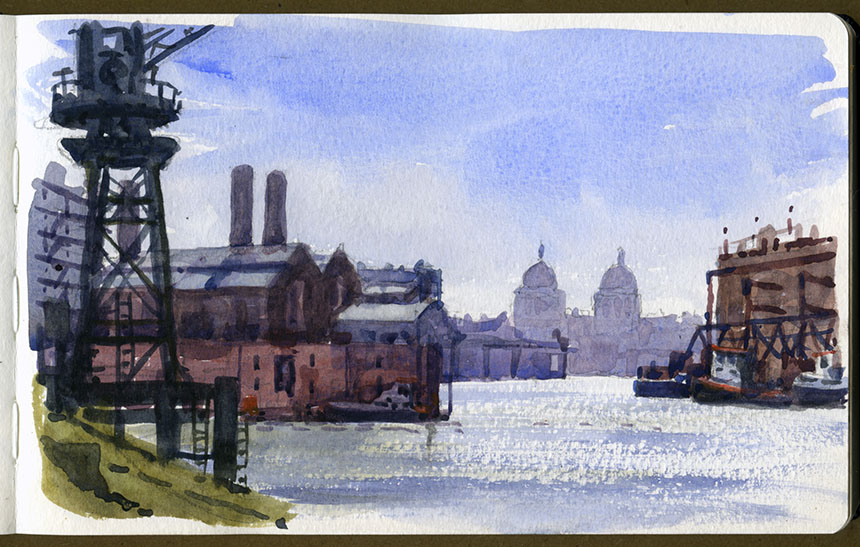
Another wee sketch, the light was gorgeous. I will do a studio one of this. 7in by 5in.
.
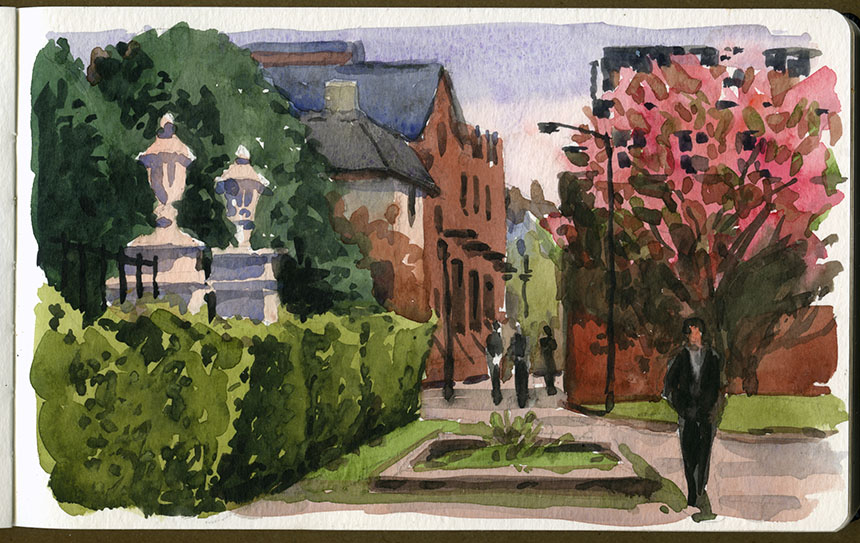
Last one a very quick 10min sketch. Then I was off to eat whitebait with the Wappers, a convivial end to the day!





